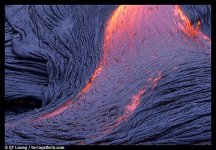Hope this helps -
This is what we sent in to be published in the revised edition of the Cornsnake Manual: (you can take some info from it if you like)
In recent years, hypomelanism has become a whole new can of worms to understand and predict. First, a new type of hypo gene turned up in our own collection of pure Okeetees in the 1990s. It looked very similar to the ‘old’ hypo, except that the individuals had Okeetee patterns and colors with less than the usual amount of black. It has since been dubbed ‘hypo Okeetee’ or ‘sunkissed’ (sometimes spelled ‘sunkist’) Okeetee. Rich Zuchowski was the first to breed the two types together and produce all normals, proving them to be separate genes. ( And then we have a paragraph about the "stargazing" trait that some of the hypo okeetees pass on to their offspring)
AND:
There is a third type of hypo that has been proven to be incompatible with the first two types. Known originally as the ‘trans (transparent) hypo’, but more recently referred to as a ‘lava’ corn, it may (or may not) also be the same as corns marketed as ‘ultra hypo’. The test breeding between ‘ultra’ and ‘trans’ / lava should be completed by the summer of 2004 and will prove or disprove their compatibility.
Lavas originated from some wild-caught corns from Jasper County, SC that were sold by Gordon Schuett to Joe Pierce of California in 1992. The hypos that resulted from those corns (much like the ‘ultra hypo’ lines) have a somewhat different look from the other two types; a kind of milky translucence to the black pigments. They generally look lighter in color overall than other hypos, almost like dark amelanistic corns with dark eyes. This line has already been crossed into anerythristics, resulting in a combination known as “Ice Ghost.” Joe Pierce and other breeders are in the early stages of combining it with other simple recessive morphs such as charcoal, lavender, and caramel, and it appears that this hypo may produce very bright and different looking multi-trait animals.

